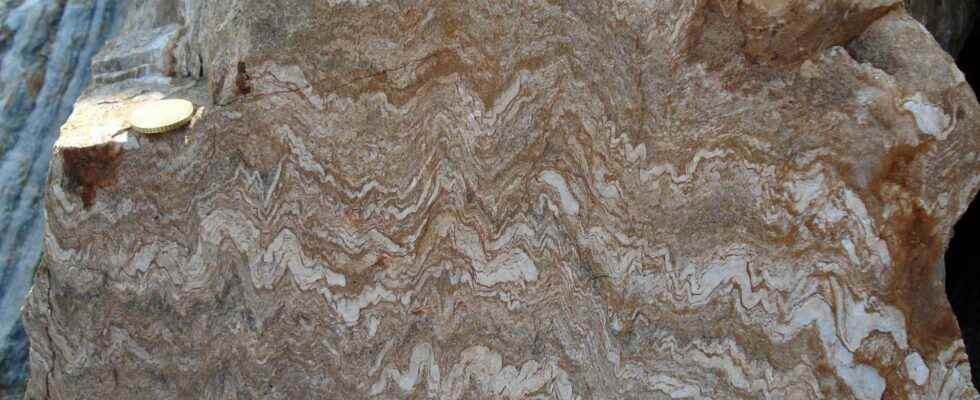Some geological processes, such as metamorphismmetasomatism or chemical weathering, lead to the transformation of all types of rocks, designated as protoliths, into rocks of a different nature.
The protolith therefore designates the original rock that has undergone this transformation process. The term protolith is therefore not linked to the nature of the rock, but to its condition as an antecedent to a transformation.
For example, the protolith of marble is a limestone : the marble is indeed the result of the metamorphism of limestone. Similarly, the protolith of a shale is a clay and the granite is the protolith of the orthogneiss.
In many studies, the identification of the protolith is a particularly important point since it makes it possible to reconstruct the geological history of a rock and thus to determine the environmental and geological context preceding the transformation stage.
The determination of a protolith: a major point in geological studies
In mountain ranges such as the Alps or the Pyreneesa large part of the rocks that we observe are metamorphic rocks, that is to say having undergone a transformation under the effect of the increase in temperature. pressure and temperature. The formation of these mountain ranges is indeed associated with continental collisions, themselves preceded by the establishment of a subduction. This tectonic context leads to the burial of certain geological units, which will then undergo a process of more or less advanced metamorphism depending on the depth of burial and the temperature. Some of these metamorphosed rocks can subsequently be found again on the surface, at the outcrop, either by the continuous action of mechanical erosion, or by tectonic processes, which can push deep units towards exhumation.
Determine the protolith of a metamorphic rock is therefore important since it makes it possible to know exactly what “path” followed the rock and to list all the transformations undergone. The protolith also provides valuable information on the geological context and the regional history preceding the mountain range formation : is it a sedimentary rocklike a sandstoneof an evaporitic rock such as gypsumlimestone or volcanic rock such as a basalt ?
For rocks having undergone extensive metamorphism, the determination of the protolith is however not necessarily obvious.
You will also be interested
Interested in what you just read?
